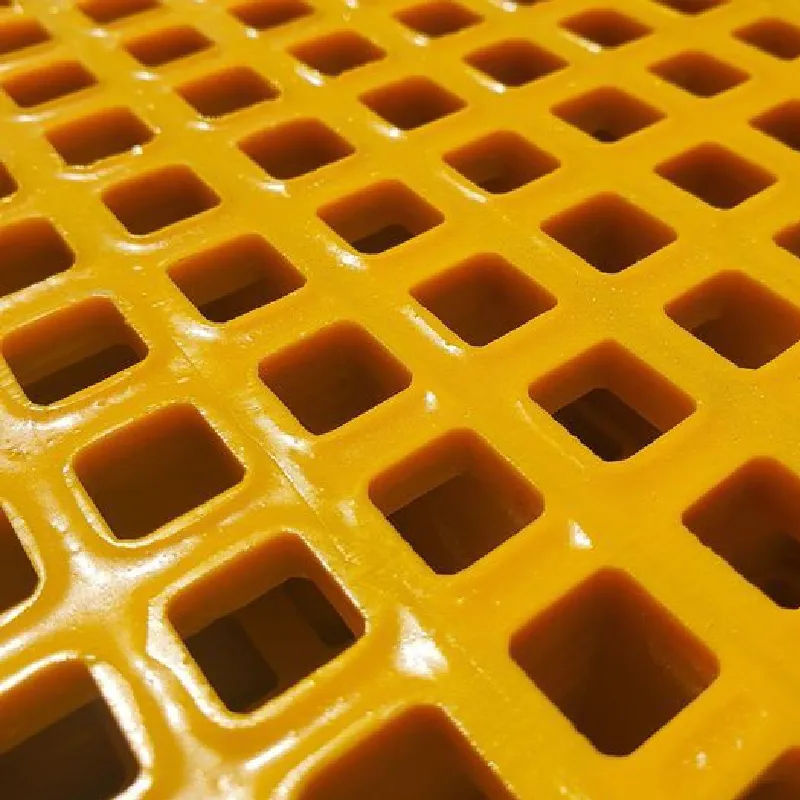loading...
- No. 9, Xingyuan South Street, Dongwaihuan Road, Zaoqiang County, Hengshui, Hebei, China
- admin@zjcomposites.com
- +86 15097380338
- Welcome to visit our website!
floor grating clamps
Understanding Floor Grating Clamps A Comprehensive Overview
Floor grating clamps are essential components used in various industrial applications, particularly in environments where safety, durability, and functionality are paramount. These fittings play a crucial role in securing grating materials to the supporting structures, ensuring that flooring remains stable and resilient under heavy loads or changing conditions. This article delves into the significance, types, and installation considerations of floor grating clamps.
The Importance of Floor Grating Clamps
In many industrial settings, floor grating systems are employed to provide safe walking surfaces, enhance drainage, and facilitate the passage of light and air. These systems are commonly seen in manufacturing plants, chemical processing facilities, and construction sites. However, to maintain their effectiveness, proper securing of the grating is essential. Floor grating clamps serve this purpose by holding the grating firmly in place, reducing the risk of movement that could lead to accidents.
The clamps not only enhance safety but also contribute to the longevity of the grating. By minimizing wear and tear caused by shifting or settling, they help preserve the integrity of the flooring system. Additionally, using the right clamps can prevent the accumulation of debris and facilitate easier cleaning, leading to a more hygienic work environment.
Types of Floor Grating Clamps
There is a diverse range of floor grating clamps available on the market, each designed to meet different requirements based on the type of grating material and the specific application. Some common types include
1. U-Shape Clamps These are commonly used for securing serrated or flat grating. Their design allows for a snug fit, preventing any lateral movement.
2. Bolt-Type Clamps Ideal for heavier grating types, these clamps use bolts to secure the grating to the supporting structure. They provide exceptional stability and are suitable for high-load applications.
3. Spring Clamps These clamps offer a flexible solution with a quick-release feature. They are often used in temporary setups or locations where periodic access is required.
floor grating clamps

4. Locking Clamps Designed for added security, locking clamps ensure that the grating cannot be easily tampered with or removed, making them perfect for sensitive areas.
Installation Considerations
When installing floor grating clamps, several factors need to be taken into account to ensure optimal performance
1. Compatibility It is crucial to choose clamps that are compatible with the specific type of grating being used. Ensuring a proper fit will enhance stability and reduce potential hazards.
2. Load Requirements Understanding the load that the grating will be subjected to is vital. This includes considering both static and dynamic loads to determine the appropriate clamp type and spacing.
3. Environmental Conditions Some industrial environments can be harsh, featuring corrosive materials or extreme temperatures. Selecting clamps made from durable materials such as stainless steel or galvanized coatings can improve longevity.
4. Installation Techniques Proper installation techniques should be followed to ensure the clamps function effectively. This includes using the correct tools and following manufacturer guidelines to avoid damaging the grating or the supporting structure.
Conclusion
Floor grating clamps are integral to the functionality and safety of industrial flooring systems. By understanding their importance, types, and installation considerations, businesses can ensure secure and reliable flooring solutions. Investing in quality clamps not only enhances safety but also contributes to operational efficiency, making them a vital consideration for any industrial application. As industries continue to evolve, the demand for reliable and effective grating solutions remains strong, underscoring the significance of these often-overlooked components.
-
The Rise of FRP Profiles: Strong, Lightweight, and Built to LastNewsJul.14,2025
-
SMC Panel Tanks: A Modern Water Storage Solution for All EnvironmentsNewsJul.14,2025
-
GRP Grating: A Modern Solution for Safe and Durable Access SystemsNewsJul.14,2025
-
Galvanized Steel Water Tanks: Durable, Reliable, and Ready for UseNewsJul.14,2025
-
FRP Mini Mesh Grating: The Safer, Smarter Flooring SolutionNewsJul.14,2025
-
Exploring FRP Vessels: Durable Solutions for Modern Fluid HandlingNewsJul.14,2025
-
GRP Structures: The Future of Lightweight, High-Performance EngineeringNewsJun.20,2025
